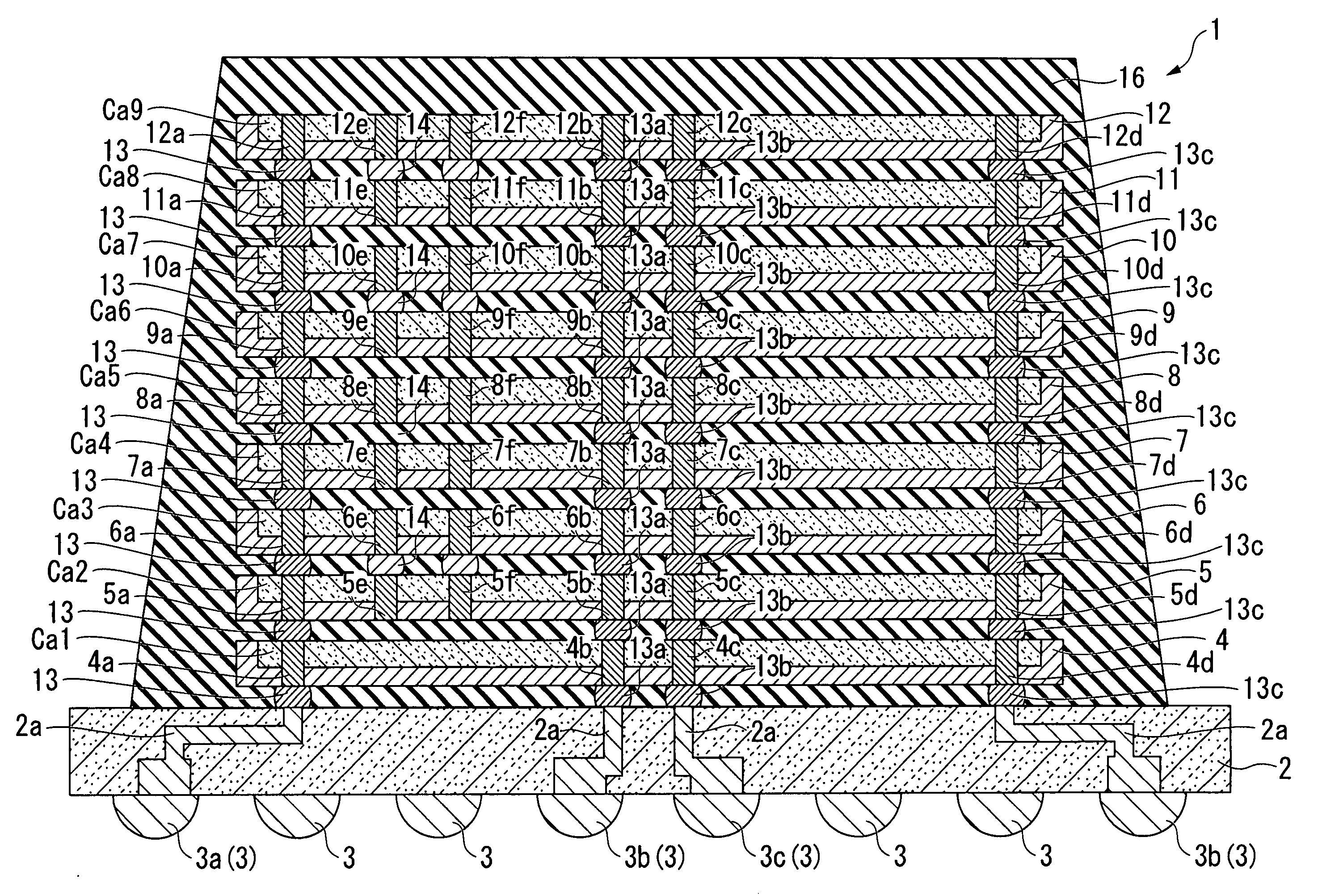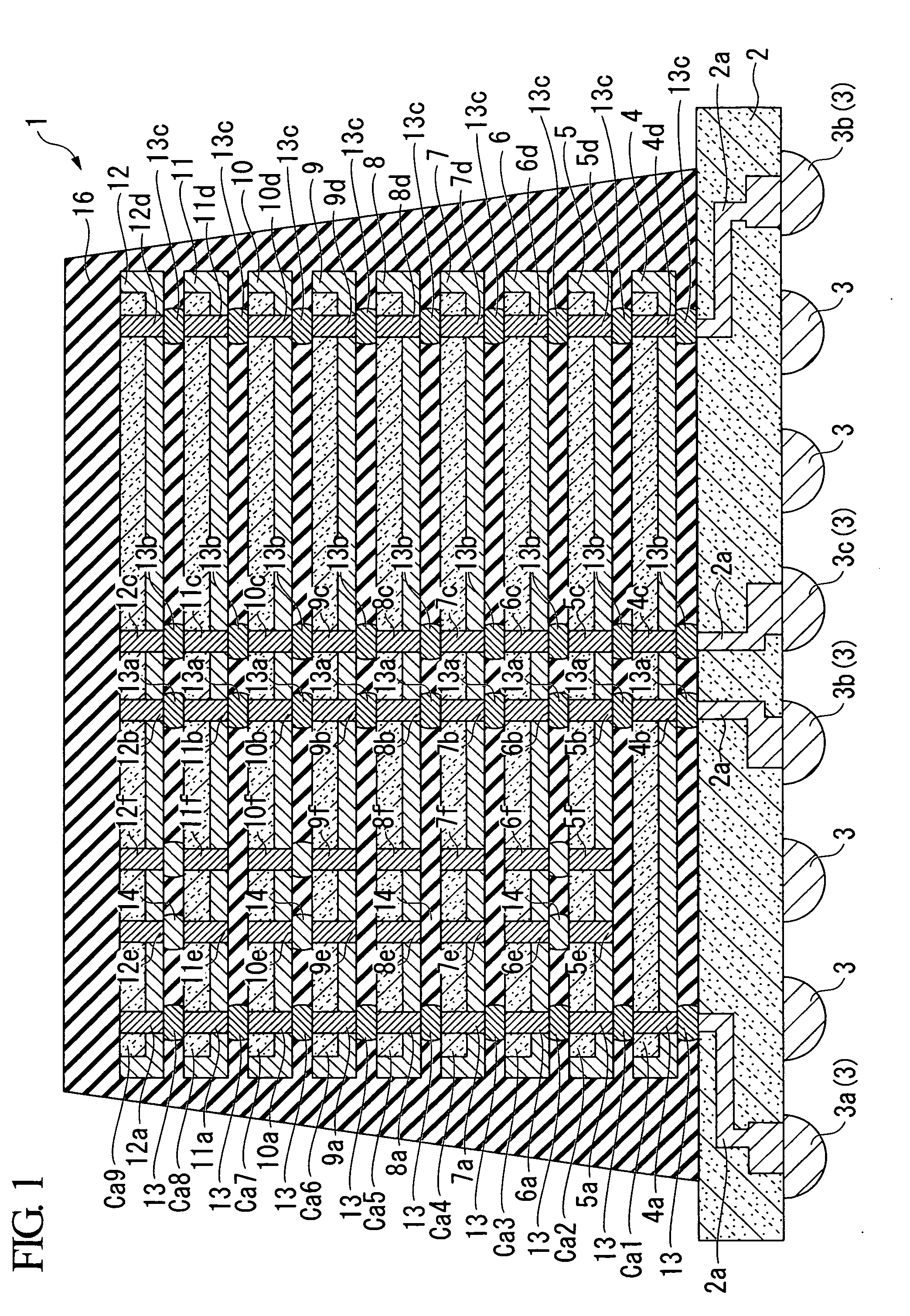Semiconductor device
a semiconductor and device technology, applied in the field of semiconductor devices, can solve the problems of difficult design of difficult to apply noise reduction techniques inapplicability to semiconductor devices having coc structures, etc., to improve the reliability of semiconductor devices, increase the overall electrostatic capacitance, and increase the overall layout area for aligning
- Summary
- Abstract
- Description
- Claims
- Application Information
AI Technical Summary
Benefits of technology
Problems solved by technology
Method used
Image
Examples
first embodiment
1. First Embodiment
[0035]FIG. 1 is a cross-sectional view of a semiconductor device 1 according to a first embodiment of the present invention. FIG. 2 is a top view of a semiconductor chip used in the semiconductor device 1. FIG. 3 is a diagram used for explaining a controller selecting semiconductor chips included in the semiconductor device 1. FIG. 4 is a circuit diagram showing a first example of equivalent circuits of semiconductor chips included in the semiconductor device 1. FIG. 5 shows equivalent circuits of a semiconductor chip whose logic circuit does not operate. FIG. 6 shows equivalent circuits of a semiconductor chip whose logic circuit does not operate. FIG. 7 is a circuit diagram showing a second example of equivalent circuits of semiconductor chips included in the semiconductor device 1.
[0036]As shown in FIG. 1, the semiconductor 1 having a chip-on-chip (COC) structure is equipped with an interposer 2 (serving as a wiring substrate) having a plurality of connection e...
second embodiment
2. Second Embodiment
[0091]Next, a semiconductor device 100 according to a second embodiment of the present invention will be described with reference to FIGS. 8 to 12, wherein parts identical to those of the semiconductor device 1 are designated by the same reference numerals; hence, the duplicate descriptions thereof are simplified or omitted.
[0092]FIG. 8 is a cross-sectional view of the semiconductor device 100 according to the second embodiment of the present invention. FIG. 9 is a perspective view showing the laminated structure of the semiconductor chips 5 and 6 in the semiconductor device 100. FIG. 10 is a cross-sectional view taken along line A-A in FIG. 9. FIG. 11 is top view showing a first example of fabrication of through-vias and electrodes in the semiconductor chips 5 and 6. FIG. 12 is a top view showing a second example of fabrication of through-vias and electrodes in the semiconductor chip 5.
[0093]The semiconductor device 100 of the second embodiment is designed in a ...
PUM
 Login to View More
Login to View More Abstract
Description
Claims
Application Information
 Login to View More
Login to View More - R&D
- Intellectual Property
- Life Sciences
- Materials
- Tech Scout
- Unparalleled Data Quality
- Higher Quality Content
- 60% Fewer Hallucinations
Browse by: Latest US Patents, China's latest patents, Technical Efficacy Thesaurus, Application Domain, Technology Topic, Popular Technical Reports.
© 2025 PatSnap. All rights reserved.Legal|Privacy policy|Modern Slavery Act Transparency Statement|Sitemap|About US| Contact US: help@patsnap.com



